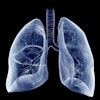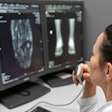
The U.K. Royal College of Radiologists (RCR) has published an updated practical guide to implementing order communications and electronic remote requesting in radiology that is free to download from the RCR's website.
Electronic requesting systems are designed to enable clinicians to request imaging procedures and receive updates on their progress using an IT system, replacing the need for paper-based systems. They should enable bidirectional communication of patient information, clinical and diagnostic decision-making, the progress of the imaging procedure, and image report status between the referring clinician and the radiology department. They must support appropriate referral of patients for imaging and timely scheduling and reporting of the test.
Electronic requesting functionality is now usually embedded within a wider electronic patient record (EPR) system, often accessed from the context of the individual patient record or from other clinical workflows, and is usually one module among many, enabling electronic requesting for pathology, endoscopy, other diagnostic tests, therapies, and specialist clinical review. Each of these departments is served by a common user interface, with a dedicated pro forma or electronic form to enter the information required for that specialty.
"The first step in designing an electronic request pro forma is to ensure all the essential information is captured as was possible on paper request forms," the authors noted. "There is then the opportunity to enhance the electronic pro forma by collecting additional relevant information, making some fields compulsory, and providing clinicians with decision support tools. Engagement with referring clinicians is an essential part of this design process."
When implemented, electronic requesting systems can restrict referrals to users with appropriate access privileges, provide the referrer with recommendations about referral criteria for medical exposures (including radiation doses), ensure the referrer supplies the radiology department with required information to enable the practitioner to justify the procedure, and maintain a log of all requested procedures for audit purposes, they continued.
For standalone electronic requesting systems, it is desirable that the same system accommodates the facility for the referring clinical team to be able to read the imaging exam reports on their patients' current and previous imaging exams. The authors emphasize that functionality of this feedback should allow:
- Flagging of urgent/unexpected results by the radiologist at the time of reporting; flagging should be possible from within the speech recognition system or PACS
- Electronic feedback of imaging results to the requesting doctors and also the clinical team
- Synchronizing of any report changes, especially addendums and multidisciplinary team meeting reports with upstream systems, including PACS, EPR, and the electronic reporting system itself
- Easy access by the requesting clinicians and their team to all their imaging study requests, with their progress status, in reverse chronological order
- Visible acknowledgement on the system that a report has been read, when, and by whom, with a permanent audit trail
- Active acknowledgement by a member of the clinical team (e.g., by clicking a check box) that the report has been understood, indicating responsibility for acting upon the report of the imaging has been transferred to the clinician, with a visible record of the identity of that person, when the acknowledgement occurred, and a permanent audit trail
It is vital the radiologists and other imaging staff work closely with clinical and IT colleagues in the procurement, implementation, and ongoing deployment of these systems, concludes the document.
The RCR recognizes that information technology can greatly improve the patient pathway in clinical radiology, particularly in terms of patient experience and efficiency, according to Dr. Pete Cavanagh, the college's vice president for clinical radiology.
"The use of electronic requesting is one such area and we would encourage all organizations involved in the requesting of radiology investigations to invest in appropriate technology," he stated in the foreword. "However, there are many pitfalls in the delivery of a service and, therefore, we hope you will find this guidance useful in ensuring you obtain the major benefits from this innovation."



















